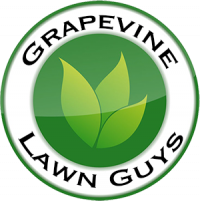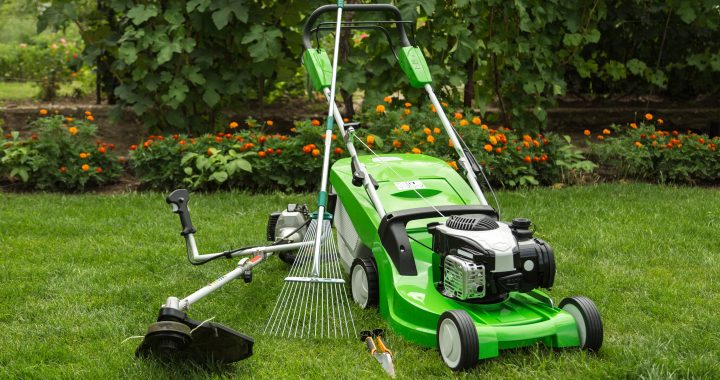Like all plants, the grass on your lawn needs some elements. These are water, air, light, and nutrients. These four elements are indispensable in everyday life; they allow the herbaceous to grow and to be in good health. Lawn care is therefore used to ensure that the lawn always has water and nutrients, and access to light. Also, it allows limiting the presence of undesirable (harmful, weeds, etc.).
To grow, the grass will tap into the soil’s water and nutrients. Mainly nitrogen, phosphorus and potassium, and also other elements in smaller amounts: calcium, magnesium, iron, sulfur, etc. Then, to feed, the grass, using the light of the sun and the water that it has just captured, will transform the carbon dioxide (CO2) of air into carbohydrates. This process is called photosynthesis.
It is clear that the four elements (water, air, light, nutrients) are essential to the good health of your lawn. Without light, no photosynthesis, no nutrients, no growth, etc. The lawn care phase is therefore used to prevent one of the elements are missing so that the herbaceous are always in good health.
To maintain your lawn, here are the main tasks to do:
- Mow your lawn: to avoid smothering the grass and give a beautiful appearance to the lawn.
- Weeding the ground: to remove unwanted plants (weeds, moss) that would eventually invade your land.
- Watering your lawn: to provide the herbaceous with sufficient water and to compensate for periods of drought.
- Fertilize your lawn: to bring nutrients to the grass, including nitrogen, phosphorus, and potassium.
- To scarify one’s ground: to remove the layer of felt and foam that stifles the herbaceous plants.
- Air the soil: to allow grassroots to better capture water and nutrients by loosening the soil.
- Terrine your lawn: to bring nutrients to the herbaceous plants and modify the soil structure.
- Roll the soil: to compact the soil, reduce air pockets and reline the blades of grass in the ground.
Each maintenance task is unique: it takes place at a given time and frequency (see for some at a specific time of the day), is done with some equipment, requires special precautions, etc.
Let’s take a look at each of these lawn care tasks in more detail.
Mowing the lawn

A Lawn Mower
Mowing your lawn is probably the most common lawn care task. In France, one cuts his lawn on average 15 to 30 times in the year. This frequency depends on the use that one makes of its ground, the climate and the varieties of herbaceous plants that one has planted.
This task makes it possible to obtain a clean, neat lawn. If we do not realize it, on the contrary, we get a terrain with a neglected aspect very quickly.
But for that aesthetic aspect, why mow his lawn?
On the one hand, because it favors cutting. This phenomenon, which is specific to different plant species, makes it possible to obtain several stems from the cut of a single one. It’s a bit like cutting the branch of a tree and instead two new branches were growing. Mowing his lawn, therefore, increases the number of grasses on his land. Thus, the tufts of grass of the lawn will appear denser, thicker, more compact.
On the other hand, mowing your lawn helps to control weeds. When you pass the mower, you cut not only the herbaceous plants but also the weeds. These often reproduce by sowing seeds. So by cutting them before they could reproduce, you limit their spread and even eliminate them. Increasing the density of the lawn can also deprive these weeds of light, water or nutrients, which will also lead to their extinction.
Weeding
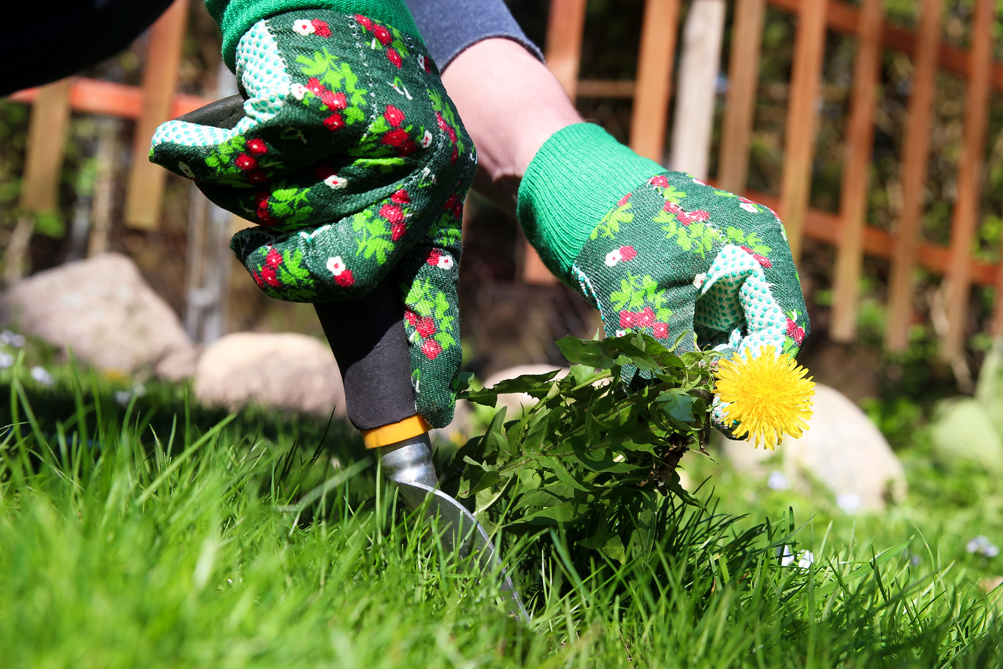
Pulling Weeds Out
Here is without a doubt the most thankless task of lawn care. Is there any incentive to pull out the weeds growing on the grass? Not much else, except for the promise of a homogenous, dense lawn devoid of parasitic plants.
But yet, weeding is a particularly profitable operation for the health of your lawn.
Indeed, what are the weeds? In the end, these are plants that come to settle naturally on your lawn. These undesirables are therefore the “historic” inhabitants of your land. The ones that were there before you turned the floor and planted your lawn. And unlike the grass of your lawn, which you had to sow, plant, water, etc., they did not need human intervention to develop.
Also, what will happen if you do not remove them? Who will win, between the weed “who gets by” and the herbaceous “who needs you?” Surely the weed! It will reproduce, smother the other plants, and colonize all your land slowly but surely. They start with an advantage: they are accustomed to climatic conditions, soil texture, the degree of precipitation and so on.
Weeding our land allows us to fight against this invasion, and at the same time to obtain a beautiful and homogeneous turf. This is an important operation in lawn care, which should not; herbaceous. But techniques exist to alleviate this painful work.
Watering the lawn
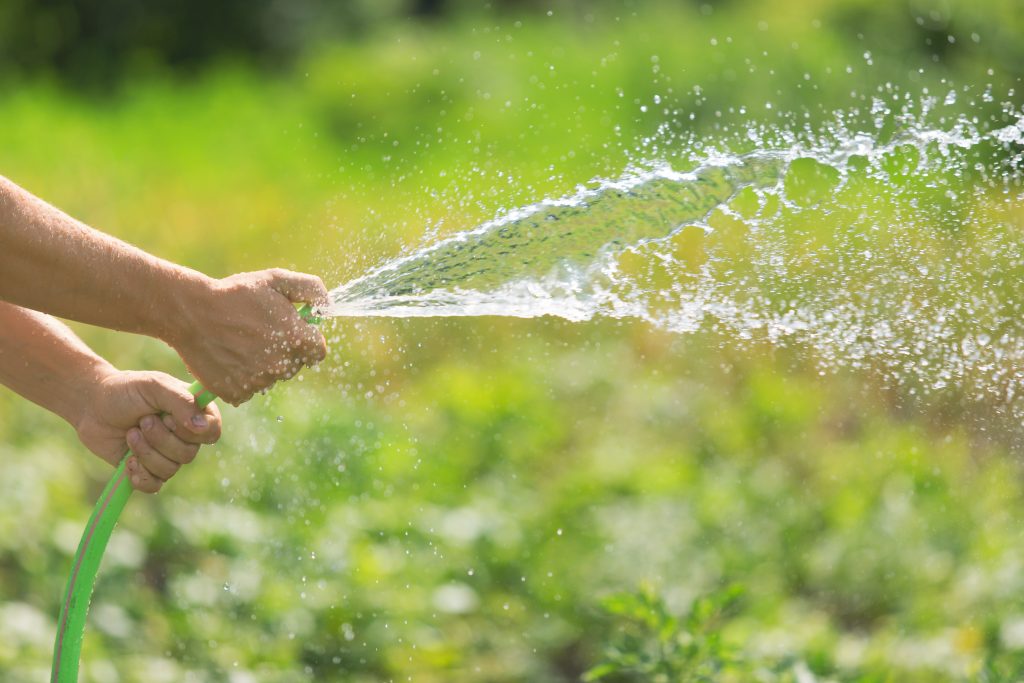
Watering the Lawn
Watering the lawn is another common task of lawn care. This makes it possible to bring water to the herbaceous plants, to allow them to live. Usually, this water is supplied to the lawn via rain. But at certain times, such as during the summer, it does not rain enough, so the herbs dehydrate. This is when it will water the grass.
Be careful, herbaceous dehydration can have different causes. This may be due to a lack of rain, but not only.
Weeds can, for example, have invaded your lawn, and capture some of the available water in the soil. You will need to weed your land.
Your floor may be too compact, and the water will have a hard time getting in. This is often what one observes on a clayey ground. It is then necessary to aerate your soil.
A layer of felt can hold water on the surface and prevent it from entering your soil. It is doubly penalizing: not only will the herbs not have access to water, but also, as it will stagnate on the surface, it will promote the proliferation of moss on your lawn. It will then scarify your lawn without further delay.
To identify whether the lack of water is due to a lack of rain or some other reason, the easiest way is sure to be equipped with a rain gauge. This device makes it possible to measure the quantity of water which it has fallen, and one can thus know if it is necessary to water its ground or not.
Lawn fertilizer
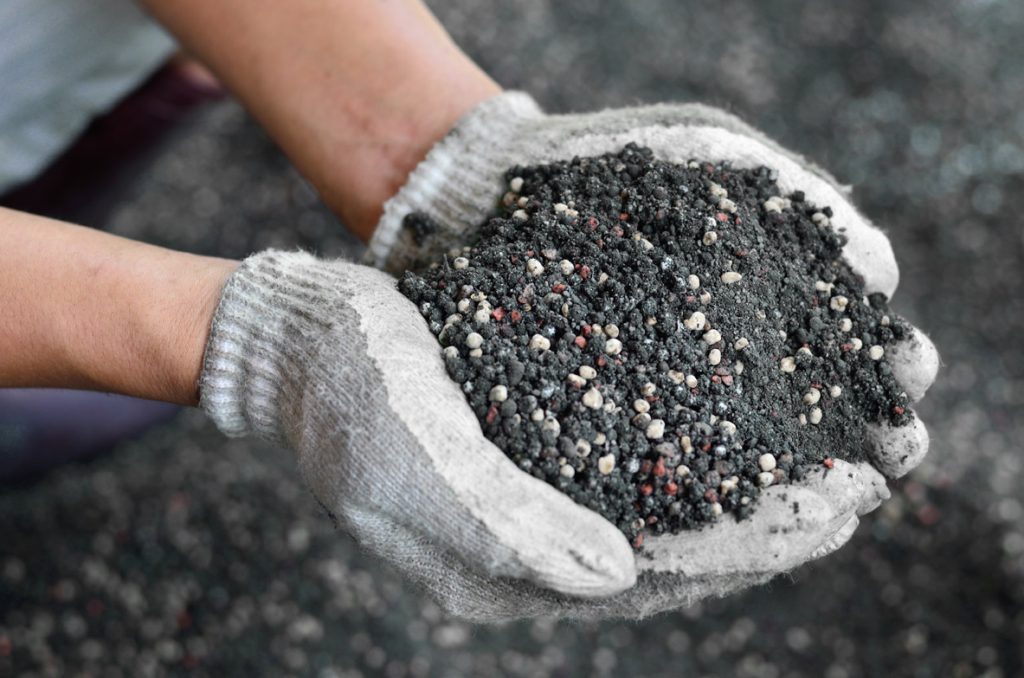
Picture showing Lawn Fertilizer
Fertilizing your lawn is a less familiar task than the previous ones. Indeed, if mowing your lawn is obvious, many people never add compost on their land. However, it can be helpful to do this at least once a year to bring nutrients to the grass on your lawn.
Indeed, after a while, the soil of your lawn is depleted. Nutrients needed by herbs, such as nitrogen, phosphorus or potassium, are becoming scarcer. We must enrich the land to meet the nutritional needs of herbs. For this, we will spread lawn fertilizer on the ground.
If we do not do this, the result will not be immediately visible. Unlike dehydrated herbs, for example, “hungry” herbaceous plants will not yellow or curl up on themselves. But little by little, the lawn will become more fragile. For example, she will be more sensitive to diseases. The grass strands will also tear more easily because the roots will be less developed.
If you do not want to spread fertilizer on your lawn for ecological or other reasons, know that there are different ways to bring nutrients to your lawn:
- The topdressing. It allows, like lawn fertilizer, to bring nutrients to the herbaceous plants. But also, this amendment makes it possible to modify the soil structure, for example by decreasing its acidity, or by making the soil less dense.
- Grasscycling. By leaving the mowing residues on the lawn, it also brings nutrients to the soil, thanks to the decomposition of cut grass blades.
Grass scarification
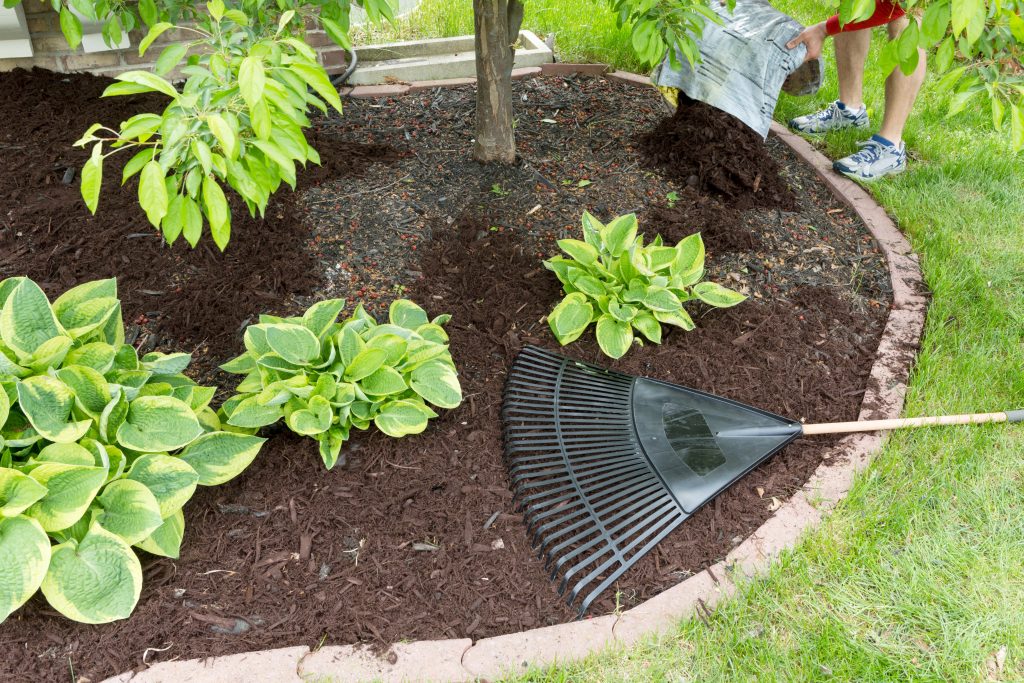
A Rake for Scarification
After planting the lawn after a few years, plant residues (roots, grasses, dead leaves, etc.) can clump on the soil surface and form a layer. First fine, it can grow little by little to finally measure several centimeters thick. This layer, called felting, gradually prevents contact between air and earth, which poses several problems.
Already, rainwater will be less able to penetrate the soil, since it will have to cross first the layer of felt. The same goes for the air, which is no longer in direct contact with the soil, as well as the nutrients that may be added (fertilizer, compost, compost, etc.). The herbaceous will be gradually dehydrated, lacking minerals, because the roots will struggle to meet their needs.
Then, the water that stays on the surface will have a detrimental effect on the lawn: this will promote the development of foam. Indeed, this plant is particularly fond of moisture and will bloom on the surface of your lawn. Be careful, because once installed, the foam proliferates and can quickly smother the entire lawn.
The solution is therefore apparent to eliminate this felting layer, by scarifying the ground. This operation removes this layer of residues, so that the soil is again in contact with the air, and that the water can easily penetrate the earth.
This operation is carried out with a rake or scarifier.
Air the earth
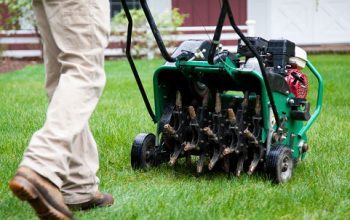
Machine Core Aerator
It can happen, over the years, that the soil on which one has planted one’s lawn becomes too compact, too hard. On a clay soil, this phenomenon is accentuated. This poses some problems for herbaceous plants.
First, the roots will have a lot more trouble growing and growing. They will stay almost in the same place, failing to move the compact earth around them. They will draw water and nutrients in the same place, and will quickly deplete soil resources.
Secondly, the water will less easily penetrate the soil, and so the roots will have less water to capture. Also, the water that will stagnate on the surface will promote the development of foam, which can quickly become harmful to your lawn.
Unlike loose and light soil, the compact soil will, therefore, be harmful to grasses. They will gradually suffocate, dehydrate, and be in poor health. It is therefore essential to aerate the soil in this case so that the roots can move again without much difficulty, and the water and nutrients penetrate well into the ground.
The aeration of its soil makes it possible, by taking small carrots of earth, to unpack its ground. We can then deposit potting soil, to change the structure of the land to lighten it. Or we can add fertilizer, to provide nutrients to the grass, which will be directly in contact with the roots via these holes.
Landscaping
The topdressing is, as its name suggests, the action of adding potting soil. This is a lawn care task that must be done punctually, often in addition to other stains, scarification or aeration of the earth for example. Landscaping has some similarities with fertilization, which is the act of spreading fertilizer on the lawn.
Indeed, the main common point is that in both materials there are nutrients. In particular nitrogen, phosphorus and potassium (respective chemical symbols N, P and K). The potting soil, like fertilizer, thus makes it possible to bring food to the herbs when the ground is impoverished. It also makes it possible to enrich the earth with various organic elements: bark, minerals, etc.
But the soil is part of the family of amendments, that is to say, that it can also change the soil structure. This is his main difference with fertilizer. By mixing it with the soil, for example, the land can be made less acidic or less compact. Correcting conditions a little unfavorable to the herbaceous ones is fascinating.
We suggest making a topdressing just after scarifying or aeration. In this way, the soil will mix better, as the nutrients will penetrate directly into the ground. The grassroots of your lawn can quickly capture them.
Roll the turf
Among the various lawn care tasks, we have seen that one of them can decompact soil too tight. This is aeration of the earth, which consists of removing small carrots of soil, to let breathe the ground and to fight against the smothering of the roots. This action is particularly useful when the earth was clay.
But what happens when, conversely, the soil is sandy, and the ground is not compact enough? That is to say when small pockets of air come off the blades of grass? This time it is necessary to tamp down the soil, this is what is called rolling the grass.
Indeed, this operation is done with a roller, like those found to flatten roads. The weight of this machine will allow to tamp the ground and remove the air pockets.
The best time to roll the turf is once the frosts are over, i.e., around March or April. Indeed, the air pockets appear mainly because of frosts, which cause the earth to swell and deflate. Note that you can also roll your lawn in the fall, after the last mowing of the year, to relieve the blades of grass that would be about to tear.
